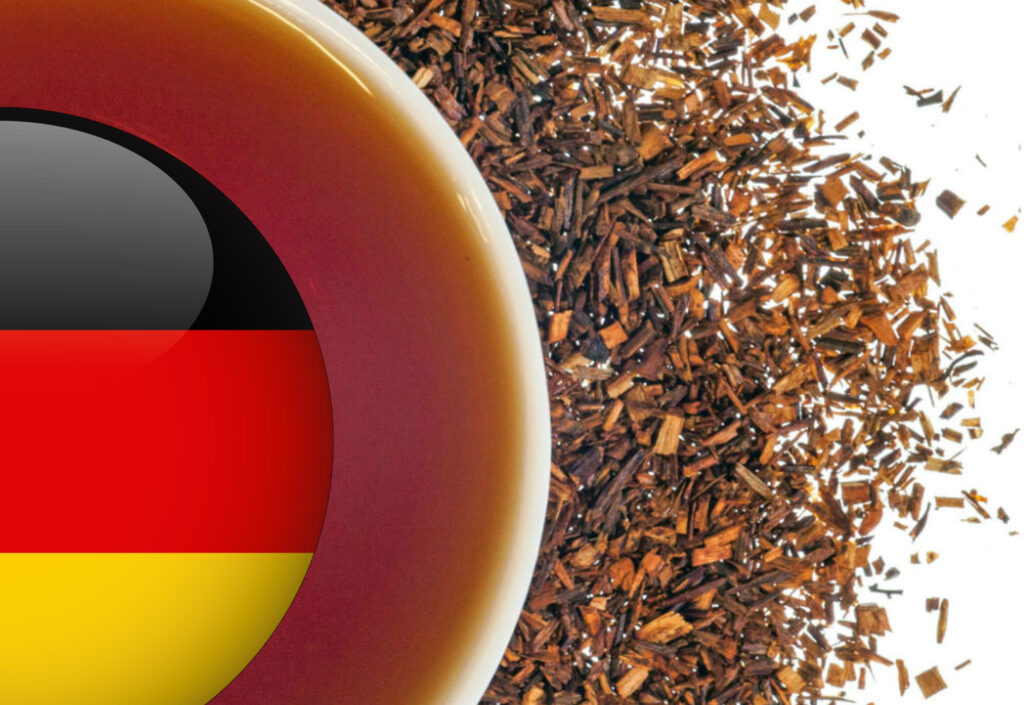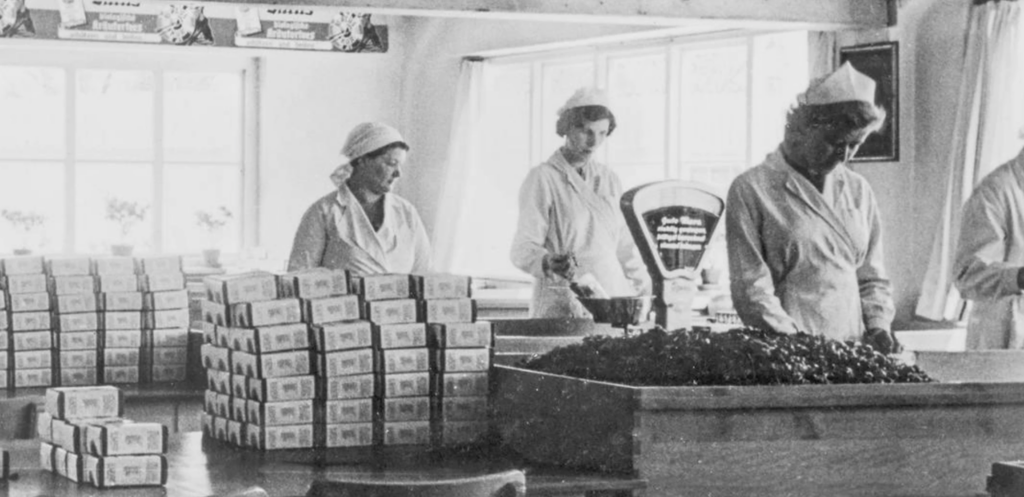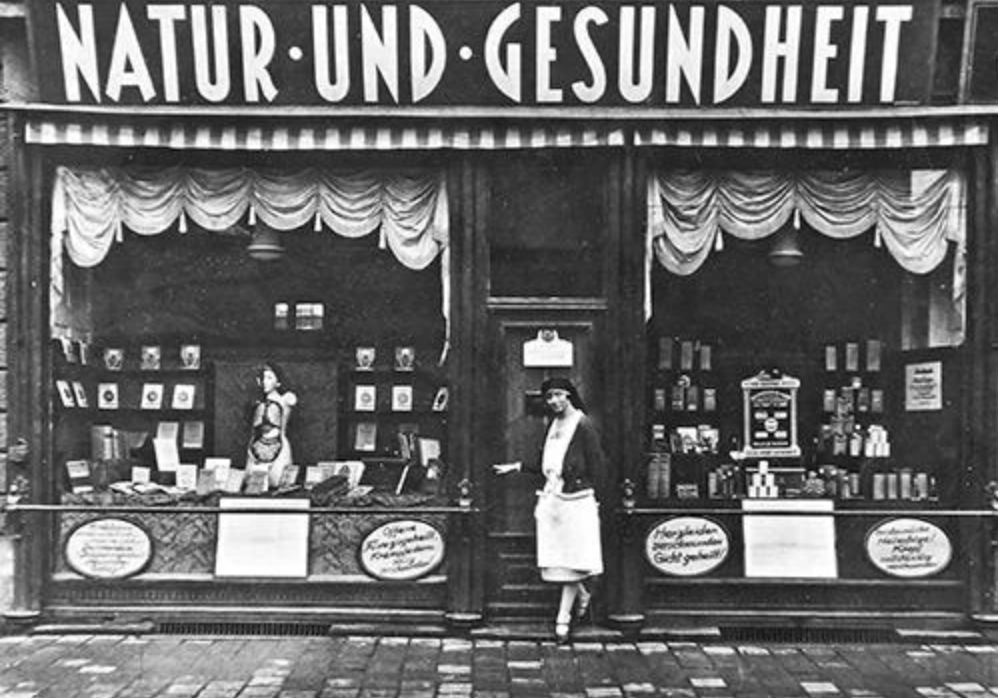Continuing our exploration of the wider global rooibos trade, this article puts the spotlight on the countries outside South Africa where rooibos consumption has become well established. Taking stock of these markets individually, this overview will begin with one of the highest rooibos importers, Germany.
History
The story of rooibos in Germany probably begins with Kräuterhaus in Hamburg.
In 1907 Hermann Alois Mayer – engrossed by philosophy, natural sciences and healthy living – started a mail-order business in medicinal herbs of the world. These days, the company boasts half a dozen varieties of rooibos and honeybush in their product mix.
In the late 1920s, when the firm was known as Kräuter-Mayer and dominated the market, the local commercial agent for South Africa brought them samples of a Cape tisane. It would have been either rooibos or honeybush.
The agent’s previous attempts to win German mainstream tea traders over had failed. He was told that the World War 1 austerities – when people in these countries drank concoctions with seaweed and other unlikely substances in place of coffee and tea – had taught them to avoid all substitutes. If Germans bought tea at all, it had to be of the best kind, so the experts ruled that the Cape tisane was unmarketable in Germany.
The manager of Caspa Tea, who had provided the samples, insisted that the agent should not introduce it as a Camellia sinensis replacement: the tisane had to be seen as an altogether new product or as a medicinal beverage. That is why the agent headed for the Kräuter-Mayer office.
It turned out that the firm had known rooibos tea for years. During the war, they had six tonnes and advertised it profusely. Despite all their attempts, their customers did not like the flavour of the South African product, so much so that Kräuter-Mayer got rid of it only at the very end of the war, ‘when the Germans drank anything’.
Only after World War 2, German importers showed interest in rooibos. Salus Haus, a company that set up the modern market for naturopathic products, was already trading in rooibos tea in the 1950s. The Rooibos Control Board gave them exclusive rights for Germany.
Instead of showing the Cederberg Mountains on their packs, Salus Haus went for a drawing of Mount Kilimanjaro. They called their product ‘Massai Tea’ – never minding that none of the members of this ethnic group lived within a thousand miles from rooibos bushes. Maybe, however, it paid more to suggest that the tea came from Kenya rather than from apartheid South Africa.
By the mid-1960s, Germany had become the biggest importer of rooibos tea. This was not much of a feat as the volumes remained so small that South African diplomats were roped in to do the promotion again.
The consulate in Cologne contacted the German Tea Importers’ Association to find buyers for rooibos. The association sent out an illustrated circular to its members with detailed information on the South African infusion. Nobody replied.
The Association members did not want to commit themselves to distributing an unknown tisane, nor were they prepared to pay to create awareness for it.
Germans, a coffee-drinking nation, have always had a penchant for herbal teas. The tradition had its roots in medicinal infusions. The popularity of tisanes in Germany correlated with that of the Camellia sinensis teas, which was seen as either Yuletide favourites or East Frisia darlings. Yet, from the early 1970s, retail teashops offering black, green and herbal varieties proliferated across the country. Germans realised that fruit and herbal infusions could be trendy and versatile enough to be ingredients of chic desserts and cocktails.
In the following decade Germany began to discover rooibos and grew to be the overseas logistical centre for the rooibos tea trade. Their firms not only imported many tonnes of rooibos but also redistributed a large portion to other West European countries, the United States and Japan.
Demand for rooibos grows
In 2000, a German Tea Council opinion poll showed a strong demand for rooibos in Germany.
German agents were now buying nearly three fourths of all the exported rooibos tea, of which they resold at least thirty per cent abroad – not only plain, in bulk, but also blended, flavoured and packaged. This practice has persisted: German companies requiring a small quantity of rooibos may find it cheaper and easier to get it from a big distributor in Germany than straight from South Africa.
When the up-and-coming ‘trend-tea’ reached the mainstream consumer, packers started to plough money into its promotion. In 2002, Teekanne, Germany’s second biggest tea brand, first advertised rooibos on TV. This beverage is good for children, Teekanne said, because it is a safe, fun way to make sure that they drink enough liquid every day. Children could even have it at supper or just before bedtime.
Other rooibos products, such as ice tea, appeared on the market. Soon, the South African brew made up about ten per cent of the tea that Germans drank.
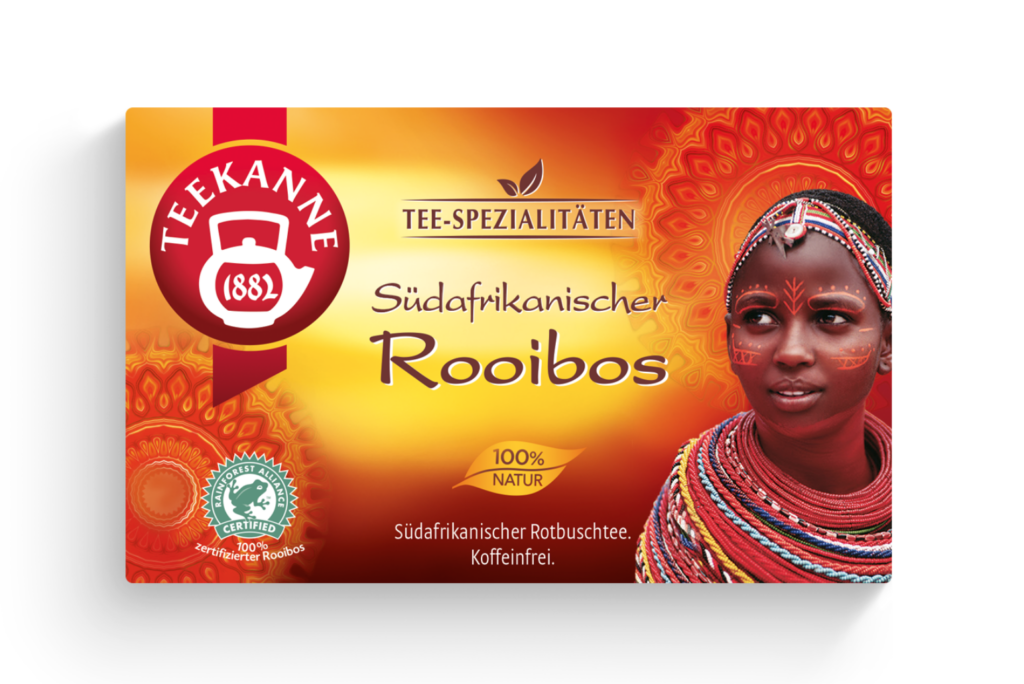
A ‘shooting star’
‘From an insider’s tip to a shooting star – that is how one could describe the career of rooibos on the German market’, remarked Tobias Gress in his 2004 thesis.
‘Nowadays, rooibos is available in almost every supermarket, department store, discounter, health food shop, specialised tea shop and even in some petrol stations. Especially, the availability at discounters with their limited product assortments shows that rooibos tea is a common product for German consumers, which they can purchase easily.’
Today, Germany is an important force in rooibos exports worldwide, as much as Hamburg is the centre of the tea business for continental Europe. Yet, the dominance of German distributors has been contested by South African suppliers.
As before, the growth of black tea consumption tallied with that of tisanes. ‘Never before has Germany drunk as much tea as in 2015’, reported the German Tea Association after a sustained, decade-long increase.
‘Never before has so much herbal and fruit tea been drunk in Germany as it was in 2015’, echoed the German Economic Association for Herbal and Fruit Tea. To this day, people in Germany consume more tisanes than Camellia sinensis teas.
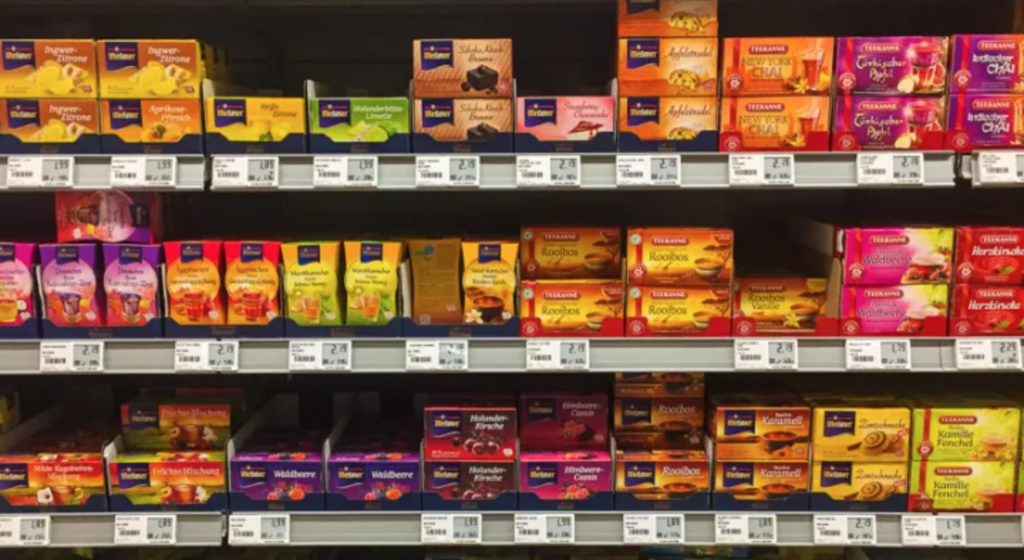
The Association has estimated that people in Germany brew about 2,700 tonnes of rooibos a year, which equals just over sixteen cups per person. Consumption of the country’s number one tisane, peppermint tea, is twice as much. In the last decade, rooibos has overtaken rosehip, but it is still behind chamomile and fennel teas. Rooibos tea is Germany’s fourth favourite tisane.
Mareike Bausch of Teekanne, the first mainstream German brand to introduce rooibos in teabags, says that the South African infusion has been positioned as a functional tea (calming and relaxing). On the other hand, it is an exotic product. Ever since their pioneering TV adverts, Teekanne has linked rooibos with African imagery. Although rooibos is not the biggest tisane in Germany, it is important for the market, particularly as a basis for blends and flavoured teas. Most of the rooibos in Germany is retailed that way, and vanilla and caramel flavours seem to be the winners.
German people seem to prefer blends and flavoured kinds to plain rooibos. Nowadays, German packers have to guarantee that their product has been grown and produced ethically. For instance, Teekanne was the first company in Germany to offer Rainforest Alliance Rooibos. The UTZ Certified seal is also favoured by German packers.
‘People want to know how the raw material is collected and how the farm labourers are treated’, says Bausch. ‘The integrity of the entire production chain has become important to consumers. They’re very sensitive in this regard.’
A major market now and into the future
Having initially being a market which had little taste for rooibos in the early 20th century, Germany’s position is now firmly established as amongst the importers of the greatest volumes in recent decades.
With the appetite of the German-speaking market (which includes Austria, Switzerland and others) for herbal tisanes and the dominance of the market by herbal houses based in Germany, the outlook for demand of rooibos looks set to remain, and continue to grow. In turn, the role of Germany is such that it has an influence on the wider European market, and beyond.
For some time, and as a result of the volumes traded by herbal houses touched on in this article, Germany had been the highest-volume importer. As highlighted in our Rooibos Marketplace article, trade data shows that German import volumes were only overtaken by Japan in 2021.
That said, with global interest in health and wellness driving a rise in consumption volumes of alternatives to coffee and black tea, import volumes are a changing landscape, and in years to come the balance of volumes by country may shift again.
This article is an extract of ‘The Rooibos Story‘ by researcher Boris Gorelik and is published with the kind permission of the South African Rooibos Council.
Look out for forthcoming related articles in the series which will provide further insights into many aspects of Rooibos including the Rooibos industry, its health benefits and the global marketplace.

